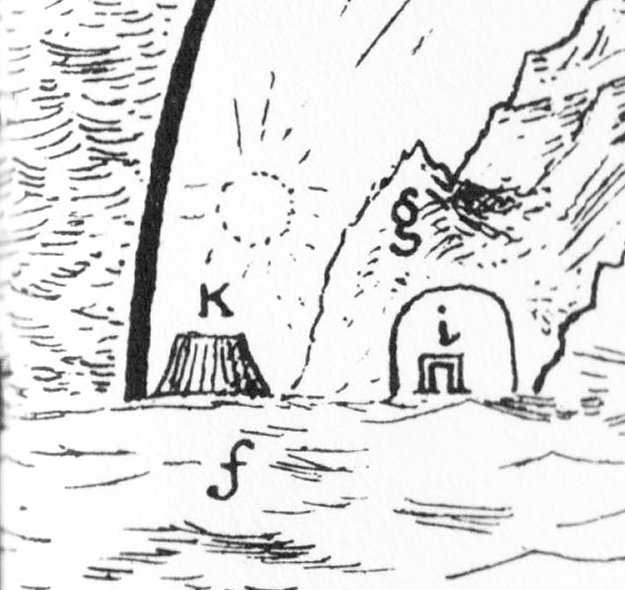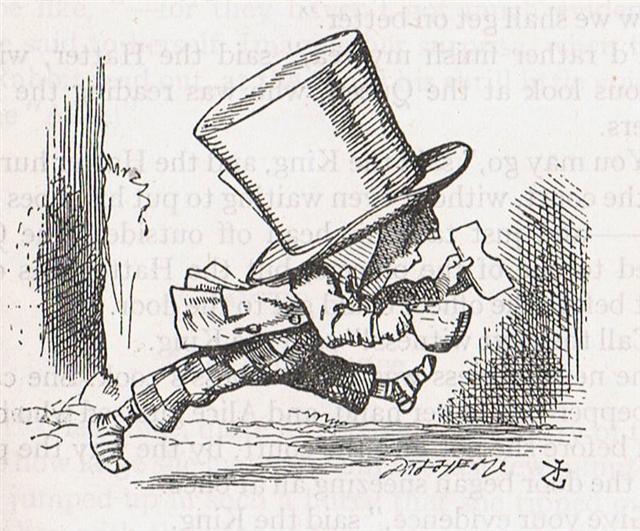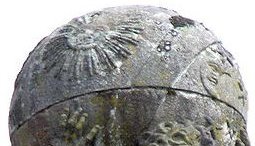The Gregorian new year was
running from January 1, but the ancient star year
could have run in parallel:
|
*AUGUST 20
(232 = 8 * 29) |
|
"September
16 (259 = 232 + 27) |
|
'September
30 (*193) |
|
October 27
(300 = 232 + 68) |
|
σ Bootis
(220.2), η Centauri (220.4) |
 |
|
Cb1-11 (403) |
| ka higa
te ao ko te henua ra ma te hoi atua |
|
ν Ceti (37.9) |
|
*FEBRUARY 18 (49 = 7 * 7) |
|
"March 16
(76 = 259 - 183) |
|
'March 30
(90 = 49 + 41) |
|
April 27
(300 - 183 = 117) |
|
*AUGUST 21 |
22 |
23 |
|
October 28
(118 + 183 = 301) |
29 |
30 |
|
ρ Lupi
(221.0),
TOLIMAN
(Balance?) = α Centauri
(221.2), π Bootis (221.8), ζ Bootis (221.9) |
31 Bootis
(222.0),
YANG MUN
(South Gate) = α Lupi
(222.1),
RIJL AL AWWA
(Foot of the Barker)
= μ Virginis
(222.5), ο Bootis (222.9) |
IZAR
(Girdle)
= ε Bootis (223.0), 109 Virginis,
α Apodis
(223.3), μ Librae (223.8) |
 |
 |
 |
|
Cb1-12 |
Cb1-13 (405) |
Cb1-14 |
| manu
rere - kua rere ga manu - ki te ragi |
eaha te
nuku erua |
koia
kua huki |
|
ν Arietis (38.5), δ, ε Ceti
(38.8) |
μ Arietis (39.4),
HEAD OF THE
FLY = 35 Arietis
(39.6),
KAFFALJIDHMA
(Part
of a Hand) = γ Ceti,
θ Persei (39.8) |
π Ceti, ο Arietis (40.0),
ANGETENAR
(Bend in the
River) = τ¹ Eridani,
μ Ceti (40.2),
RIGHT WING =
39 Arietis (40.9) |
|
*FEBRUARY 19 |
20 |
21 (52) |
|
April 28
(118 = 4 * 29½) |
29 |
30 |
|
*AUGUST 24
(236 = 472 / 2) |
25 |
26 |
|
October 31 |
November 1
(305) |
2 |
|
Al
Zubānā-14a /
Visakha-16 /
Root-3
(Badger)
ZUBEN
ELGENUBI (Southern Claw) = α Librae
(224.2), ξ Bootis, ο Lupi (224.5) |
KOCHAB (Kakkab
= Star) = β Ursae Min.
(225.0), ξ Librae (225.7) |
KE KWAN
(Cavalry Officer)
= β Lupi (226.3),
KE KWAN
= κ
Centauri (226.4),
ZUBEN
ELAKRIBI (Scorpion's Claw?)
= δ Librae (226.8), π¹ Oct. (226.9) |
 |
 |
 |
|
Cb1-15 |
Cb1-16 (408) |
Cb1-17 |
| e niu
tu |
ki te
ariki - e ka hua ra tona rima |
koia
kua iri i ruga o te rima - e o to vaha mea |
|
Bharani-2 /
Stomach-17
(Pheasant)
π Arietis (41.2),
MIRAM
(Announcer?) = η
Persei (41.3),
BHARANI
(Bearer) = 41 Arietis (41.4),
τ² Eridani, σ Arietis (41.7) |
TA LING
(Great Mound) = τ
Persei (42.4) |
ρ Arietis (43.0),
GORGONEA
SECUNDA = π Persei
(43.5),
ACAMAR
= θ Eridani (43.6), ε Arietis (43.7), λ Ceti (43.9)
|
|
*FEBRUARY 22
(53) |
23 |
24 |
|
May 1 (11 *
11) |
2 |
3 (123) |
|
*AUGUST 27 |
28 (240) |
|
November 3 |
4 (308 = 240 + 68) |
|
ω
Bootis (227.2),
NEKKAR
(Herdsman)
= β Bootis (227.3), σ Librae (227.5), π² Oct.
(227.7),
NADLAT
(Low little ones)
= ψ Bootis (227.8), π Lupi (227.9)
|
15h (228.3)
ZUBEN
HAKRABIM (Scorpion's Claw)
= ν Librae
(228.3), λ Lupi (228.9) |
 |
 |
|
Cb1-18 |
Cb1-19 (411
- 4 - 4 = 403) |
| manu
moe ra |
ki to
mata |
|
MENKAR
(Nose) = α Ceti
(44.7) |
3h (45.7)
GORGONEA TERTIA = ρ
Persei (45.1),
ALGOL = β
Persei (45.9) |
|
*FEBRUARY 25 |
26 (57) |
|
May 4 |
5 (5 * 5 *
5) |
From 'muan' in Cb1-11 to the sleeping little one
with navel string still hanging down in front (Cb1-18, where
1-18 could allude to 472 / 4) there was a week.
|
Moe
To sleep, to lie at full length, to
dream, to brood, to place, to cohabit; moe atu,
to leave off, to desist; moe atu ra, to adjourn,
to postpone; moe hakahepo, to talk in the deep;
moe aherepo, somnambulist, sleepwalker; moe
hakataha, to sleep on the side; moe no, to
oversleep, concubinage; moe tahae, to be a light
sleeper; moe tahaga, a sleeper; moe
vaeahatu, moe hakaroa, to sleep sprawling;
rava moe, to sleep sound; ariga moe ki
raro, to lie flat on the ground; tae moe,
bachelor; hakamoe, to brood, to fold the wings;
to reserve, to lay up; to struggle. P Pau.: moe,
sleep. Mgv.: moe, sleep, to lie down, coitus, to
shut the eyes. Mq.: moe, to sleep, to lie down;
haámoe, to set down on the ground. Ta.: moe,
to sleep, to lie down. Moea raruga, lying flat.
Moeaivi, thin. Mq.: ivi, haáivi,
id. Ta.: ivi, id. Moega, mat. Pau.:
moehega, bed. Mgv.: moega, a sleeping mat.
Mq.: moena, moeka, mat, floor cloth, bed.
Ta.: moea, bed. Moemata, to sleep with the
eyes open; mea moemata, phantom. Moemoea,
a dream, vision; tikeahaga moemoea,
apparition by night. T Mgv., Mq., Ta.: moemoea,
dream. Churchill.
Mgv. Moemoe, to steal, to
purloin at a food distribution. Mq.: moemoe, to
seize, to grasp. Churchill. Ta.: 1. Moemoe,
ambush. Ha.: moemoe, id. 2. Moemoe,
Phyllanthus simplex. To.: mohemohe, a tree.
Churchill. Mq.: Moehu, exiled, banished, prisoner
of war. Ma.: morehu, a survivor. Churchill. |
 |
 |
 |
 |
|
moa |
Cb1-11 (403) |
Cb1-18 (410) |
moe |
When the Sun reached Bharani, the place for
giving birth, the Full Moon was at
α Librae (Zuben Elgenubi).
The little coconut tree (niu) stood up here (tu)
which ought to mean Metoro identified Cb1-15 (possibly alluding to April
25) with the horizon in the east rather than with the horizon in the
west. But the canopy of this young tree carried both > and <.
"Canopy ...
covering over a throne, etc. ... for L. cōnōpēum ... net
over a bed, pavilion - Gr. kōnōpeîon Egyptian bed with
mosquito curtains, f. kōnōps gnat, mosquito." (English
Etymology)
"... the Egyptian calendar
lost about one day every four years relative to the Gregorian
calendar. It is therefore sometimes referred to as the wandering
year (Latin: annus vagus),
as its months rotated about a third of the way through the solar
year each century. Ptolemy III's
Canopus Decree
attempted to correct this through the introduction of a sixth
epagomenal day every four years but the proposal was resisted by
the Egyptian priests and people and abandoned until the
establishment of the Alexandrian or Coptic calendar by Augustus
..."
(Wikipedia)
... What the net could be is known from the
story of Kaulu. This adventurous hero, wanting to destroy a
she-cannibal, first flew up to Makalii the great god, and asked
for his nets, the Pleiades and the Hyades, into which he
entangled the evil one before he burned down her house.
It is clear who was the owner of the nets up
there. The Pleiades are in the right hand of
Orion on the Farnese Globe, and they used to
be called the 'lagobolion' (hare
net). The Hyades were for big game ...
|
Niu
Palm tree, coconut tree; hua niu,
coconut. Vanaga. Coconut, palm, spinning top. P Pau.,
Ta.: niu,
coconut. Mgv.: niu,
a top; niu mea,
coconut. Mq.: niu,
coconut, a top. Churchill. The fruit of
miro. Buck. T.
1. Coconut palm. 2. Sign for peace. Henry. The sense of
top lies in the fact that the bud end of a coconut shell
is used for spinning, both in the sport of children and
as a means of applying to island life the practical side
of the doctrine of chances. Thus it may be that in New
Zealand, in latitudes higher than are grateful to the
coconut, the divination sense has persisted even to
different implements whereby the arbitrament of fate may
be declared. Churchill 2.
Nikau
Mgv.: The coco palm. Ta.:
niau, coconut
leaf. Ha.: niau,
stem of the coconut leaf. Ma.:
nikau, an
areca palm. Churchill.
Mgv.:
niu,
the coconut palm when young, ripening into
nikau.
... the ni of New Caledonia leads us to infer
that niu was anciently a composite in which ni
carried at least some sort of generic sense, it being
understood that this
refers to those characteristics which might strike the
islanders as indicating a genus. In composition with
kau tree we should then see nikau, the ni-tree,
serving in Mangareva for the
coconut
palm, in New Zealand for the characteristic palm (Areca
sapida) of that land, in Tahiti as niau for
coconut leaf, and as niau in Hawaii for the leaf
stalk of the coconut. The ni-form is found in
Micronesia, and in the Marshall Islands ni is the
coconut. Churchill 2. |
The world beneath the
north pole was spinning around and there was uncertainty as to
the cardinal directions. Before birth the fate of the new little one
was unknown. At the horizon in the east there was a chamber of
hazard, for until with the arrival of spring light the vision was
poor and the cardinal points unclear.
...
Originally the
highly born family of the Sun, Moon, and stars dwelt in a cave
on the summit of Maunga-nui, Great Mountain, in the
ancient homeland. They were not at all comfortable in their
gloomy home for they could not see distinctly and their eyes
watered constantly.
After the
Sky-father had been elevated to his present eminence Tane
decided that the celestial family would be happier in the sky,
where they would serve the double purpose of ornamenting the
naked body of Rangi and giving light to the Earth-mother.
Since Papa had already been turned with her face toward
the Underworld
it is difficult to see how she would benefit by the illumination
...
... Jupiter ruled both above and below, with his Tree streching all the way up from the lowest regions:

A little house of birth can be seen where a bright path curves up to the place where the new Tree emerges from some crack in the carapace of the earth. And to complete the cycle there had to be a return path:
... This Snake-river of sparkling dust, the stream of the abyss on high through which it runs, the golden cord of the heaven-god ... connected alike with the hill of the Sun-god and with the passage of ghosts, is the Milky Way ... The Norsmen knew it as the Path of the Ghosts going to Valhöll (Valhalla), in the region Gladsheimr, - the palace of their heroes slain in battle; and our North American Indians had the same idea, as witness the 'wrinkled old Nokomis', when, teaching the little Hiawatha, she
Showed the broad white road in heaven, / Pathway of the ghosts, the shadows, / Running straight across the heavens, / Crowded with the ghosts, the shadows, / To the Kingdom of Ponemah, / To the land of the hereafter;
the brighter stars along the Road marking their camp-fires ... Our aborigines and the Eskimo also called it the Ashen Path, as did the Bushmen of Africa, - the ashes hot and glowing, instead of cold and dark ... (Allen)
The basic idea seems to go back at least to the ancient Babylonians, which had a House of Hazard - implying the new year birth was not a predetermined event but subject to the will of the genetic gods - positioned in the east where the Sun was rising (at left in the picture below):

... Da ferner sofort nachgewiesen werden wird, dass sich der apsū unter der Erde ihrer ganzen Ausdehnung nach befindet und ein Höhlung unter der Erde nur verursacht werden kann durch eine Wölbung der Erde, werden wir nicht umhinkönnen, diese Vorstellung von dem apsū wieder gespiegelt zu sehen in dem Bericht des Diodor, dem gemäss die Erde von den Chaldäern in der Gestalt eines umgestülpten Bootes vorgestellt wurde ... (Jensen)

... Als solch ein Ort (resp. ein Gemach) im Osten des apsū [water below the earth] und im Osten der Erde an der Grenze zwischen dem sichtbaren und unsichtbaren Reiche hat der Duazag eine ganz besondere Bedeutung im Glauben der Babylonier. Er ist ... 'der Ort der Geschicke', der ki nam-tar-tar-ini = aar imātum. Ein Solcher konnte nur im Osten liegen. Denn die Sonne geht im Osten auf. Die Ostsonne ist Marduk. Darum bringt auch Marduk die Geschicke aus der Behausung seines Vaters Ía, dem Urwasser, hervor ...
... Von diesem [Nebukadnezar's II grosser Inschrift] heisst es ... 'Duazag, der Ort der Geschicke im Ubugina [Versammlungsraum], das (dem?) Gemach der Geschicke, in dem im Zakmuku
[= F(e)ast for Marduk at the beginning of the year to determine (make fast) the future (of the year/halfyear?) for which the gods went to Marduk's tempel Ĭsagila in Babylon: '... zu dem sich die übrigen Götter und vor Allem Barsip(pa)'s Hauptgott Nabū in feierlichem Zuge zu Schiff ... begaben ...']
zu Jahresanfang am 8ten (und?) am 11ten Tage der (Gott-)König .... sich niederlässt und die Götter über Himmel und Erde ... das Schicksal der Zukunft ... bestimmen ...'
... Ganz ähnlich is der Name 'Gott von Duazag' des Gottes Nabū ... zu erklären. Er bezeichnet ihn als den Gott des Wachtstums, welches als aus dem Osten stammend betrachtet wird, weil die Sonne, die das Wachstum bringt, im Osten aufgeht. Dass aber Nabū als Ost-Gott aufgefasst wurde, hängt damit zusammen, dass sein Stern, der Mercur, nur im Osten oder Westen sichtbar ist ...
... Wir begreifen, warum der Tirītu durch 'Monat (des) Duazaga' bezeichnet wird. Denn in diesem findet die Aussaat des Korns (insbesondere ... des Weizens und der Gerste) statt, der Duazag aber hat zu diesen ... als Ort des Gottes, der das Wachstum des Weizens befördert, eine ganz bestimmte Beziehung ¹
¹ Beachte aber, dass der erste Monat des Jahres nach dem Schicksalsgemach (= Ubugina) bezeichnet wird ... , der siebente aber d.i. der erste der zweiten Jahreshälfte nach dem im Ubugina befindlichen Duazaga. Sollte darum die Deutung des Namens Tirītu als 'Anfang' doch vorzuziehen sein?
|

... The 'living
god', moreover, passes the night prior to the dismemberment
of Lono in a temporary house called 'the net house of
Kahoali'i', set up before the temple structure where
the image sleeps. In the myth pertinent to these rites, the
trickster hero - whose father has the same name (Kuuka'ohi'alaki)
as the Kuu-image of the temple - uses a certain 'net
of Maoloha' to encircle a house, entrapping the
goddess Haumea; whereas, Haumea (or Papa)
is also a version of La'ila'i, the archetypal fertile
woman, and the net used to entangle her had belonged to one
Makali'i, 'Pleiades'.
Just so, the
succeeding Makahiki ceremony, following upon the
putting away of the god, is called 'the net of Maoloha',
and represents the gains in fertility accruing to the people
from the victory over Lono. A large, loose-mesh net,
filled with all kinds of food, is shaken at a priest's
command. Fallen to earth, and to man's lot, the food is the
augury of the coming year. The fertility of nature thus
taken by humanity, a tribute-canoe of offerings to Lono
is set adrift for Kahiki, homeland of the gods. The
New Year draws to a close. At the next full moon, a man (a
tabu transgressor) will be caught by Kahoali'i and
sacrificed. Soon after the houses and standing images of the
temple will be rebuilt: consecrated - with more human
sacrifices - to the rites of Kuu and the projects of
the king ...

|














